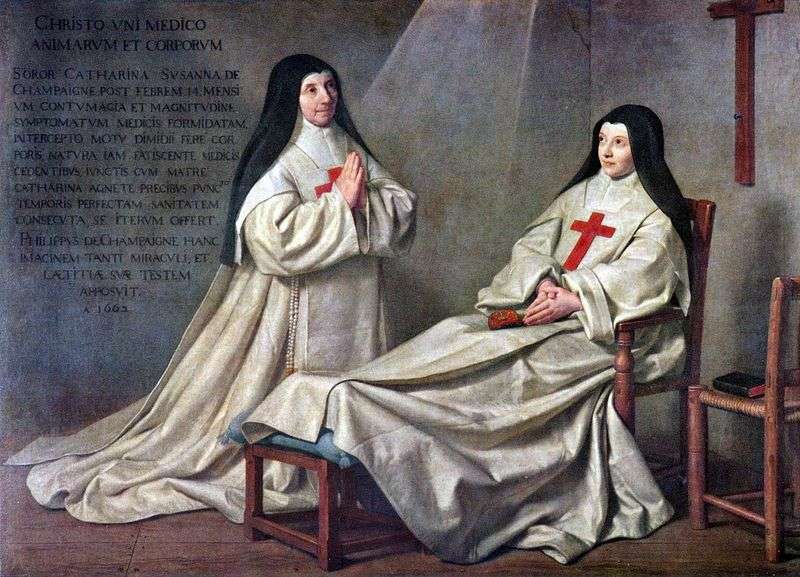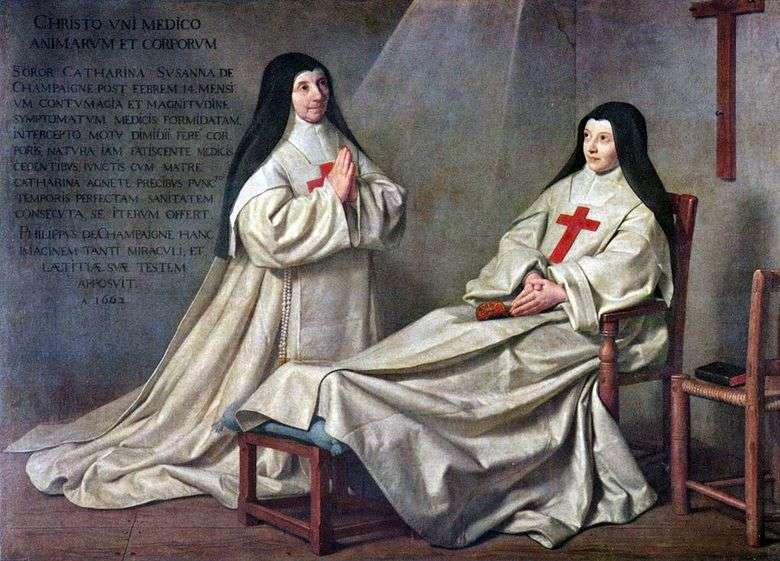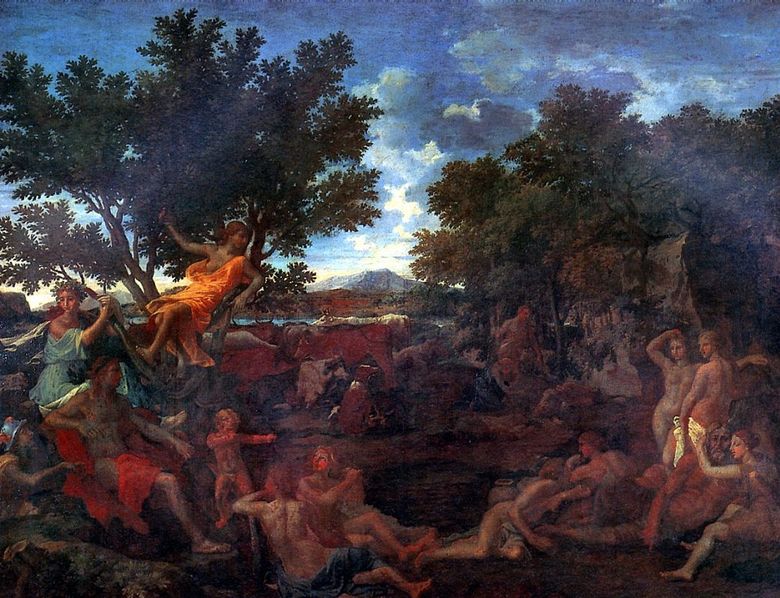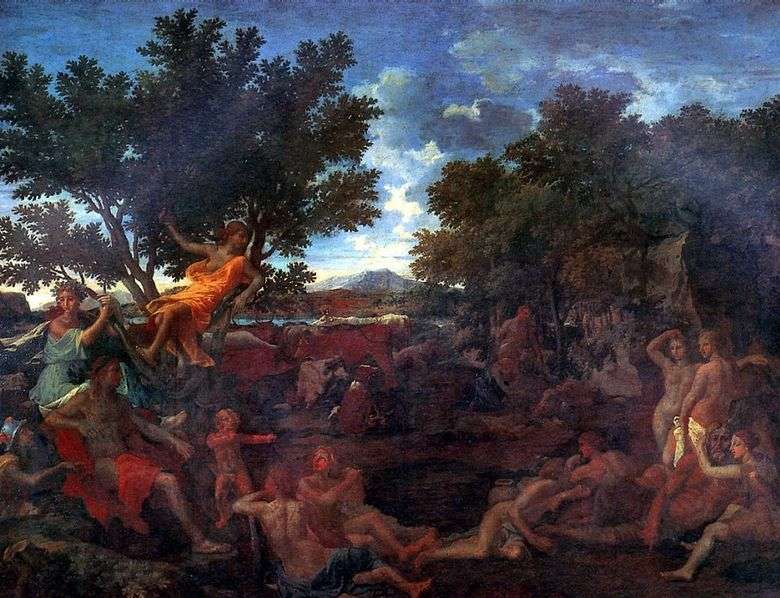
The French artist Philippe de Champigne was one of the courtiers’ favorite painters, he executed numerous orders of Louis XIII, Cardinal Richelieu and Maria Medici. The master came to Paris in 1621 and studied at the College de Lan, among whose pupils was N. Poussin. In 1622-1626, together with Poussin, Champigne performed decorative paintings for the Luxembourg Palace.
In Paris, the artist was quickly noticed and soon became a court painter. He was noted for his amazing receptivity and extraordinary talent, he easily learned new trends in art, but at the same time he practically did not bother with creative searches. Masterly craftsmanship allowed him to create in a variety of genres, satisfying the tastes of high-ranking customers.
The portrait of the daughter of the artist and mother of the prioress is decided as a genre scene from the church life. In it, the picturesque mastery of Champigny reaches that virtuosity in the transfer of nature, details of everyday life and costume, which borders on pedantry, but the painting of Champigny did not become dry and soulless. His images are spiritualized and presented with the poetic power, which, strikingly coexisting with naturalism, forms the basis for the originality of the master’s portraits. Other famous works: “Cardinal Richelieu.” 2nd floor. 1630’s. Louvre, Paris; “Architect Jacques Lemercier”. OK. 1650. The National Museum, Versailles.
 Offrande votive – Philippe de Champaign
Offrande votive – Philippe de Champaign Apollo and Daphne by Nicolas Poussin
Apollo and Daphne by Nicolas Poussin Ofrenda votiva – Philippe de Champignes
Ofrenda votiva – Philippe de Champignes Apollon et Daphné – Nicola Poussin
Apollon et Daphné – Nicola Poussin Apolo y Dafne – Nicolas Poussin
Apolo y Dafne – Nicolas Poussin Portrait of Chancellor Seguier by Charles Lebrun
Portrait of Chancellor Seguier by Charles Lebrun Death of Germanicus by Nicolas Poussin
Death of Germanicus by Nicolas Poussin Concert in the lap of nature by Nicola Lancre
Concert in the lap of nature by Nicola Lancre